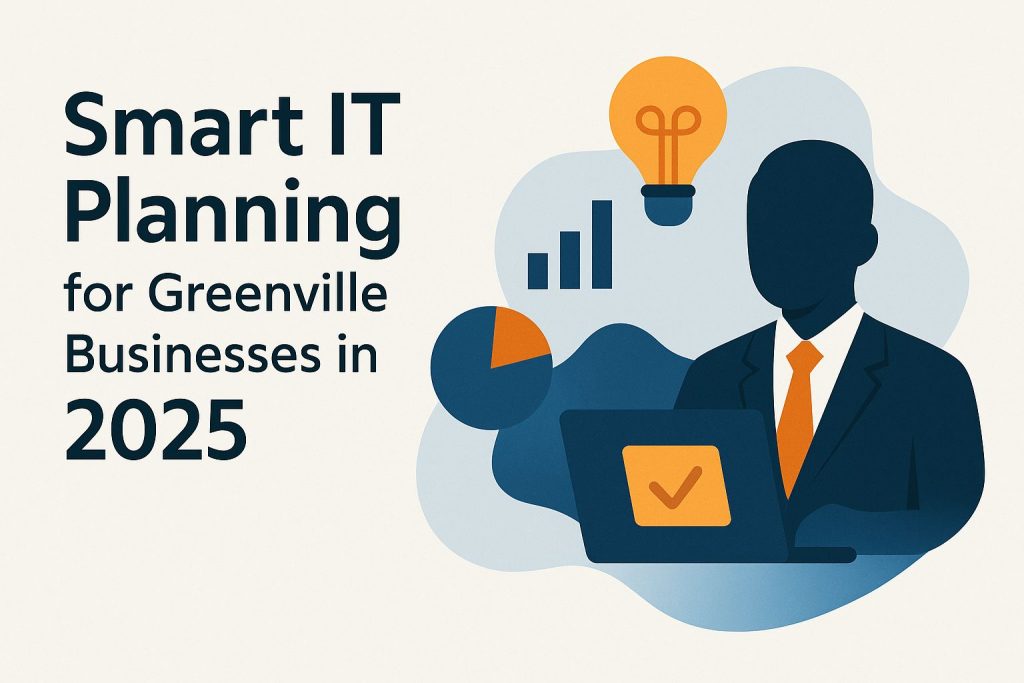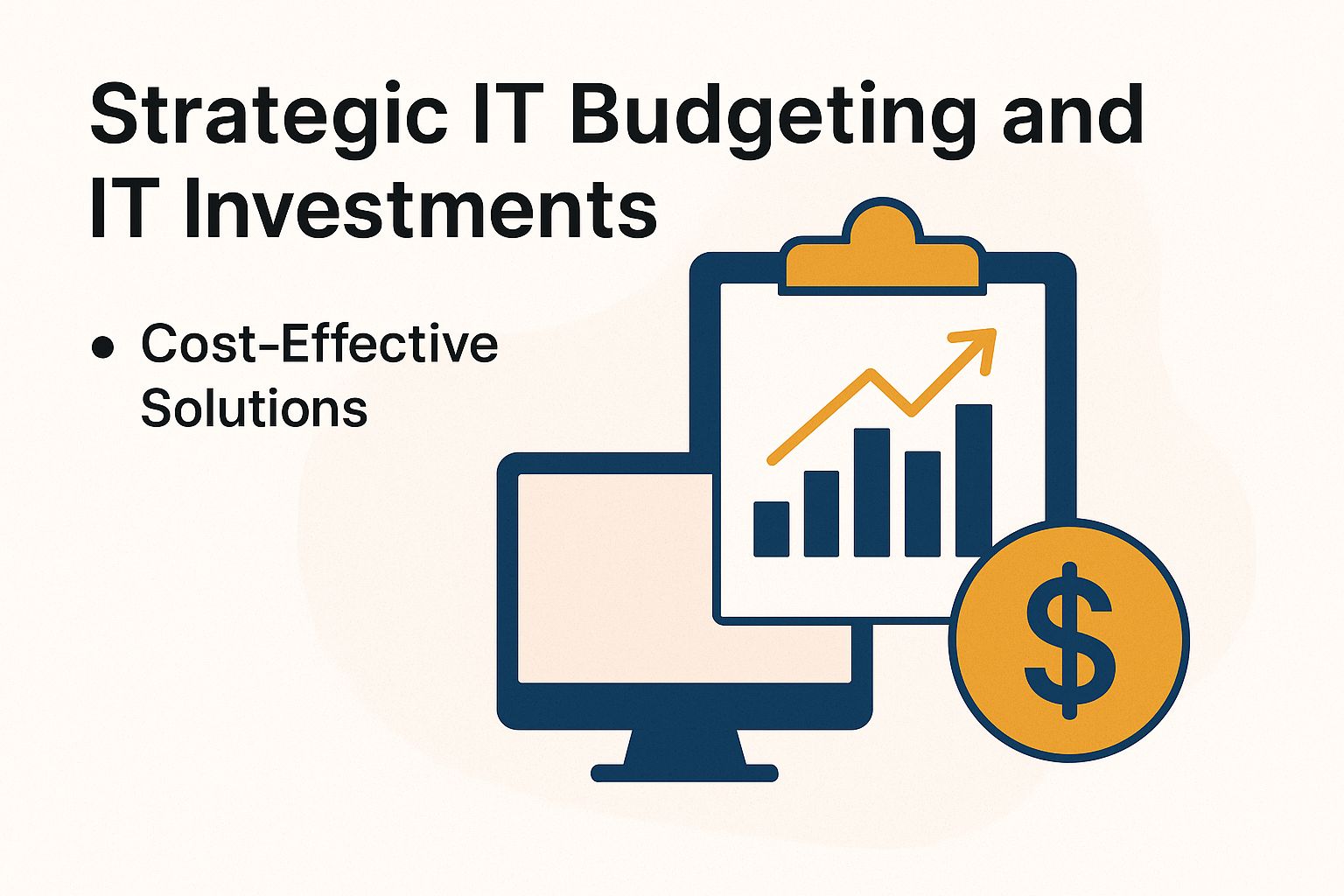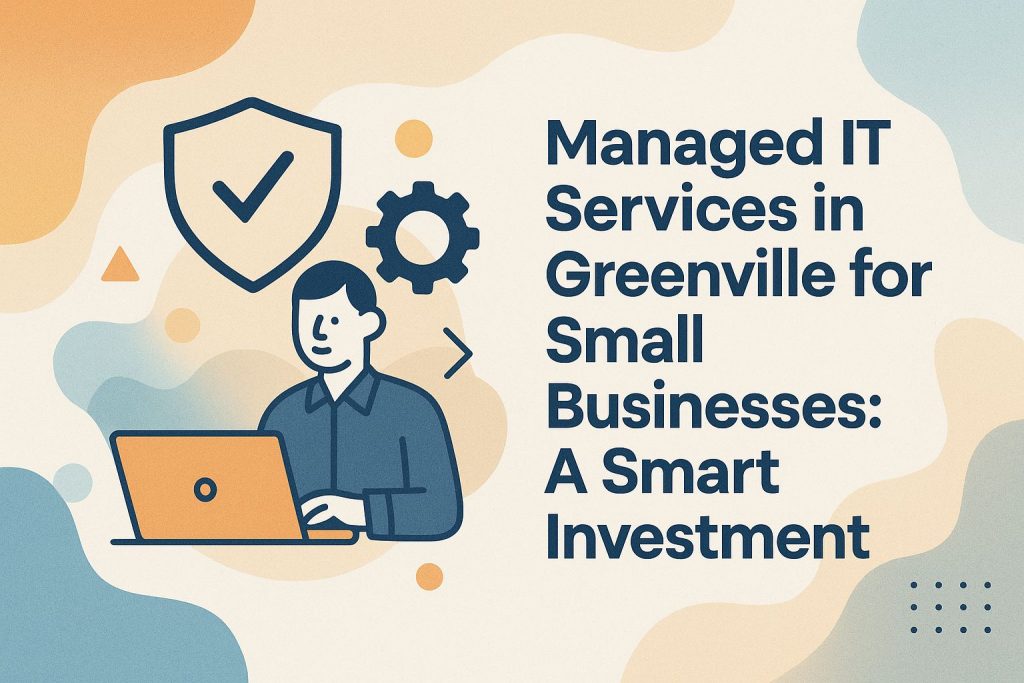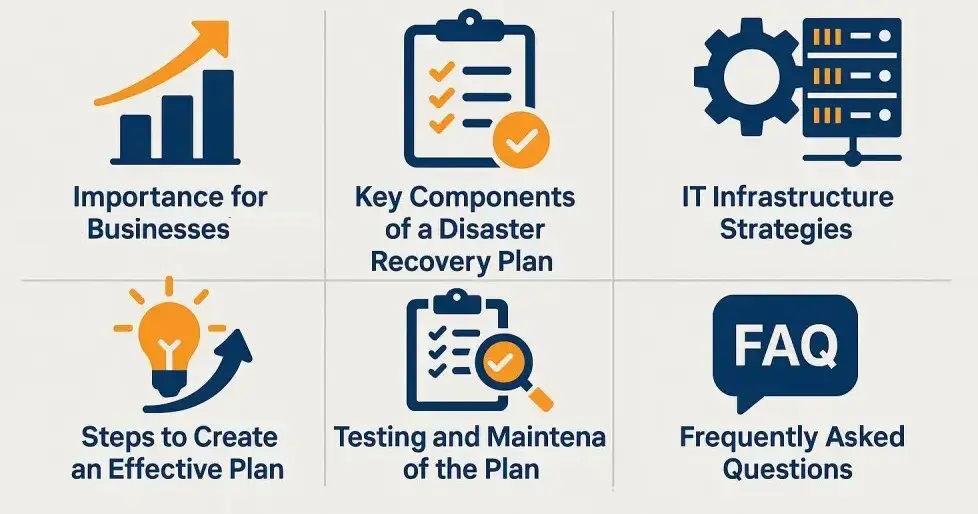Smart IT Planning for Greenville Businesses in 2025

Greenville businesses must prepare for 2025. Strategic IT planning is essential. Businesses must understand key trends due to rapid advancements in technology. These include artificial intelligence, cybersecurity, and sustainable practices. This article covers three topics. First, assessing current IT infrastructure. Second, the importance of strategic budgeting. Third, integrating cost-effective solutions. This will give Greenville enterprises a roadmap to succeed in a digital world.
Key Trends in IT and Technology Strategy for 2025

As 2025 approaches, several key trends in IT are emerging that businesses should monitor to remain competitive and innovative. One effective strategy is outsourcing IT management, which offers numerous benefits to adapt swiftly to these changes. The advantages of this approach can be crucial for leveraging emerging technologies and trends.
Artificial Intelligence, Machine Learning, and Automation
AI, machine learning, and automation may cut operational costs by up to 30% by 2025. They will change workflows and optimize businesses across various industries.
For example, IBM Watson has the capability to analyze extensive datasets to uncover valuable insights, assisting businesses like H&R Block in streamlining their tax preparation processes.
Simultaneously, Zapier automates repetitive tasks by connecting different applications, enabling marketing teams to manage social media updates automatically. Organizations such as Shopify have effectively leveraged these tools, resulting in enhanced efficiency and a reduction in administrative burdens.
By integrating AI for data analysis alongside automation tools for task management, companies can concentrate on strategic initiatives while significantly lowering labor costs.
Cybersecurity and Network Security Enhancements
Cyber attacks are expected to increase by 50% by 2025. Organizations must improve cybersecurity and network security to protect business continuity and data.
Organizations should implement multi-factor authentication (MFA) tools. Examples include Authy and Google Authenticator. These add an extra layer of security for user accounts. Next, utilizing end-to-end encryption solutions, such as Signal or ProtonMail, can effectively protect sensitive communications.
Regular risk assessments using services like Qualys or Rapid7 should be conducted to identify vulnerabilities within the systems. Additionally, training employees on cybersecurity best practices is crucial; organizations should consider workshops or online courses to ensure their teams are informed about emerging threats.
Assessing Current IT Infrastructure and Technology Adoption
Assessing current IT infrastructure is crucial. It creates a solid foundation for smart IT planning and technology adoption. The process begins with evaluating network performance. Use tools like SolarWinds, which provide real-time monitoring.
Next, an assessment of hardware assets is essential; this includes reviewing the age and specifications of servers and workstations to determine which components may require upgrades.
In terms of software, conducting a license audit is crucial to avoid compliance issues and to identify any unused licenses that could lead to cost reductions.
Engaging the team to gather feedback on the usability of current tools and to pinpoint pain points is also important. Documenting these insights will enable the formulation of a comprehensive report that guides infrastructure improvements and informs strategic investments. For those interested in strategic financial planning, our insights on IT Budgeting for Greenville Manufacturing Startups offer valuable perspectives on planning growth while managing costs efficiently.
Strategic IT Budgeting and IT Investments

Strategic IT budgeting is essential. It optimizes ROI on technology spending and aligns with business goals.
Cost-Effective Solutions
Implementing cost-effective IT solutions can reduce operational costs by up to 25% and enhance overall efficiency. To achieve this, organizations should consider adopting open-source software such as LibreOffice, which eliminates software licensing fees, or migrating to cloud services like Amazon Web Services (AWS), which provides a flexible pay-as-you-go model.
Negotiate vendor contracts. Use competing offers to secure better rates or discounts.
For example, during renewal, show alternative quotes. This can encourage the vendor to match or exceed them.
These strategies can save money and ensure quality resources for the organization.
Implementing Sustainable and Green Technology Practices
Sustainable technology practices in IT promote corporate responsibility and reduce costs.
One approach is to optimize energy use through virtualization. Platforms like VMware vSphere let multiple virtual machines run on one server, reducing energy use.
Integrate e-waste recycling programs. This can divert old hardware from landfills. Partner with organizations like ERI or Sims Recycling Solutions. They ensure compliant disposal of electronic waste and reclaim valuable materials.
These practices can cut energy costs by up to 30% each year. This benefits both the environment and the organization’s finances.
Frequently Asked Questions
What is Smart IT Planning and Technology Roadmap for Greenville Businesses in 2025?
Smart IT planning for Greenville businesses in 2025 uses technology and data-driven strategies. It improves operations and helps achieve long-term goals.
Why is Smart IT Planning and IT Governance Important for Greenville Businesses in 2025?
In today’s digital world, businesses without smart IT planning and governance may struggle to stay competitive and meet customer needs.
What are Some Examples of Smart IT Planning and IT Solutions for Greenville Businesses in 2025?
Examples include using cloud-based solutions, data analytics for decisions, investing in cybersecurity, and embracing business intelligence.
How can Greenville businesses start implementing smart IT planning for 2025?
Businesses can start by assessing their current IT infrastructure. Identify areas for improvement. They can seek guidance from IT professionals or attend smart IT planning workshops.
What are the potential benefits of smart IT planning for Greenville businesses in 2025?
Benefits include increased efficiency, cost savings, better customer satisfaction, and staying ahead of competitors.
What should Greenville businesses consider when creating an IT plan for 2025?
Important factors include business goals, budget, scalability, and impact on employees and customers. Regularly review and update the plan to keep it relevant and effective.




